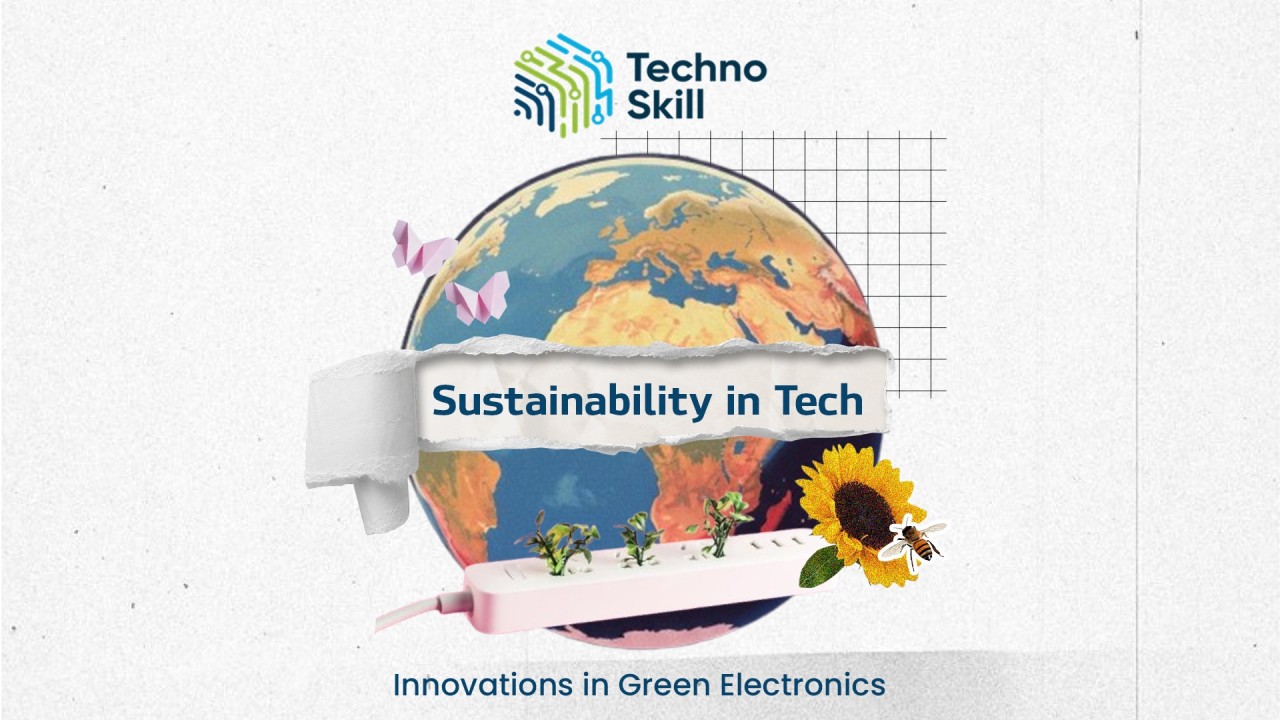The world is becoming more digital with each passing day. From the phones in our pockets to the servers that power the cloud, technology is everywhere. But with this rapid growth comes a serious challenge, how do we make tech more sustainable? As environmental concerns rise and regulations tighten, the need for eco-friendly innovations in electronics is stronger than ever.
This article explores how the tech industry is working toward a greener future. We will look at new materials, responsible manufacturing, energy-efficient designs, and how businesses can lead the change by adopting sustainable practices.
Why Sustainability in Tech Matters
The tech industry is one of the fastest-growing sectors in the world, but it is also among the most resource-intensive. Electronics require mining of rare earth elements, large-scale energy consumption, and often result in harmful waste when discarded. If the industry continues to grow without sustainable practices, the environmental impact could be enormous.
From carbon emissions to toxic waste, the environmental footprint of electronics is real. That is why the shift toward green technology is not just an option—it is a necessity.
The Rise of Green Electronics
Green electronics refers to devices and components designed with environmental considerations in mind. This can include everything from the materials used in circuit boards to the way a device is powered and eventually recycled.
Here are some key areas where innovation is making a difference:
Eco-Friendly Materials
One of the most promising areas of green innovation is in the materials used to make electronics. Traditional plastics and heavy metals are being replaced with biodegradable and recyclable alternatives. For example:
- Bioplastics: Made from renewable resources like cornstarch or sugarcane, bioplastics reduce dependency on petroleum-based plastics.
- Recycled Metals: Using recycled aluminium and copper helps reduce mining and the environmental damage that comes with it.
- Organic Semiconductors: These are carbon-based materials that can conduct electricity. They are often more environmentally friendly to produce and dispose of.
Energy-Efficient Designs
Reducing energy consumption is a major focus for green tech. Devices are now being designed to use less power during operation, charge faster, and maintain performance without draining resources. Key developments include:
- Low-Power Chips: Advances in microchip technology have led to processors that use far less energy.
- Smart Power Management: Devices now come with systems that adjust energy use based on real-time needs.
- Renewable Energy Integration: Solar-powered devices and chargers are becoming more common, especially in remote or off-grid areas.
Sustainable Manufacturing
Manufacturing electronics typically involves processes that consume large amounts of water and electricity. Many companies are now focusing on reducing their manufacturing footprint. Strategies include:
- Clean Energy Factories: Using solar or wind energy to power manufacturing plants.
- Water Recycling Systems: Capturing and reusing water in production lines.
- Minimal Waste Production: Designing factories and production methods that create as little waste as possible.
Longer Product Lifecycles
Planned obsolescence has been a huge problem in tech. Devices are often built to last only a few years. But this is starting to change.
- Modular Devices: These are gadgets that allow easy replacement of parts instead of replacing the whole device.
- Repairable Designs: Companies are now focusing on making products that are easier to fix, not just throw away.
- Software Support: Extending software updates ensures that hardware does not become outdated too soon.
Responsible E-Waste Management
The end-of-life stage of an electronic device is just as important as its creation. Green tech includes planning for what happens when a product is no longer useful.
- Recycling Programs: More companies are offering take-back schemes to collect and properly recycle old devices.
- Material Recovery: Innovative recycling technologies can now extract valuable metals and parts from old electronics for reuse.
- Global Partnerships: Collaborations with NGOs and governments to ensure ethical e-waste management.
Circular Economy in Tech
Instead of the traditional make-use-dispose model, many tech companies are embracing a circular economy. This involves designing products and systems that keep resources in use for as long as possible.
- Refurbished Products: Selling refurbished electronics as a mainstream option.
- Component Reuse: Reusing parts from old devices in new ones.
- Product-as-a-Service: Offering tech products on a subscription model, where the company maintains ownership and handles reuse.
How Businesses Can Adopt Green Tech
For businesses looking to reduce their environmental impact, embracing green electronics is a great place to start. Here is how:
- Audit Existing Tech: Assess the sustainability of the electronics currently in use.
- Partner with Sustainable Vendors: Choose suppliers who follow eco-friendly manufacturing and packaging.
- Train Staff: Educate teams on energy-saving practices and proper device disposal.
- Buy Smarter: Invest in durable, energy-efficient products with longer lifespans.
- Use Renewable Energy: Power office spaces and data centres with clean energy.
The Role of Innovation in a Greener Future
Innovation is the key to transforming how we think about and use technology. Startups, academic institutions, and major corporations are all contributing to a growing pool of ideas that make electronics more sustainable. Some exciting developments include:
- Printed Electronics: Using inkjet printing techniques to create electronic circuits, reducing waste.
- Nanomaterials: Ultra-small materials with the potential to reduce the size and energy use of components.
- Green Data Centres: Facilities that use efficient cooling, renewable energy, and smart systems to minimize carbon footprints.
Why Now Is the Time to Act?
The urgency to adopt sustainable practices in tech has never been greater. Climate change is accelerating, resources are dwindling, and consumer awareness is rising. Businesses that move toward sustainability today are not only protecting the planet—they are also positioning themselves for long-term success.
Customers are already asking harder questions. Investors are watching sustainability metrics. Governments are setting stricter laws. Being proactive is no longer just good PR—it is smart business.
Conclusion
Sustainability in tech is not about going backwards or slowing down progress. It is about innovating forward, using smarter designs, cleaner processes, and thoughtful practices. Green electronics are not a trend—they are the future of responsible technology.
Whether you are a tech company, a business leader, or a conscious consumer, your choices matter. From the materials we use to how we power and dispose of our devices, each step can bring us closer to a cleaner, smarter world.
The future of tech is green. And it starts now.

